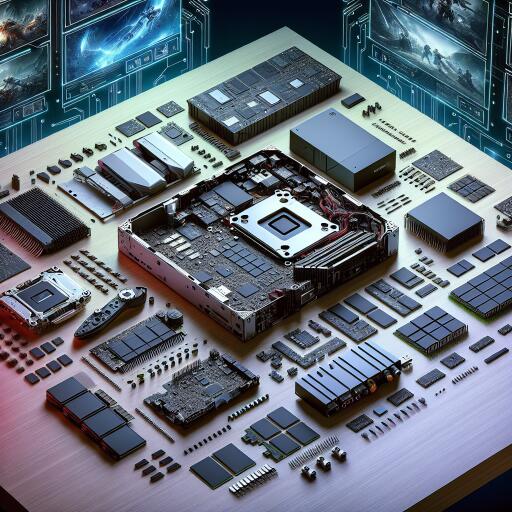Rumor Mill: Nintendo’s Next Console Set to Eclipse PS4’s Capabilities
The gaming community is abuzz with the latest whispers and speculations surrounding the anticipated successor to the Nintendo Switch, tentatively dubbed the “Switch 2.” Sources within the gaming forums—a melting pot of enthusiasts and insiders—have taken to meticulously sifting through shipping manifests to uncover what could very well be the blueprint of Nintendo’s next big venture.
In their detective-like fervor, these fans have unearthed details regarding the hardware specifications that, if true, could position the Switch 2 comfortably ahead of the PlayStation 4, and even its beefier sibling, the PlayStation 4 Pro, in terms of raw performance.
Central to these discussions is the assertion that the Switch 2 will boast 12 GB of RAM, utilizing two 6 GB modules of 7500 MT/s LPDDR5x memory. This is a significant leap forward, not just in quantity but more so in the technological advancement over the PS4’s GDDR5 memory. The PS4’s 16 GB of RAM, with its 5500 MT/s bandwidth, pales in comparison to the speed and efficiency offered by LPDDR5x, highlighting a generational leap in memory technology that could redefine gaming performance standards for handheld consoles.
There’s also chatter about Nintendo’s potential partnership with Samsung, a behemoth in the semiconductor industry, to supply these high-end memory chips. This collaboration might suggest that Nintendo is not only prioritizing performance enhancements but also masterfully balancing cost-efficiency and technological advancement through strategic supplier relationships.
Further revelations suggest the Switch 2 will incorporate 256 GB of UFS 3.1 internal storage, a vast improvement over its predecessor’s eMMC storage. UFS 3.1, or Universal Flash Storage, outshines the older eMMC solution in both capacity and speed, promising quicker game load times and a more seamless gaming experience. This not only marks a considerable upgrade in storage capability but also ensures faster and more efficient data processing—essential for a console that aims to redefine portability and power.
Comparisons with the PS4 aside, it’s clear that Nintendo is aiming to leapfrog over conventional storage solutions found in previous console generations. The choice of Samsung as a partner in developing UFS storage solutions underscores the tech giant’s apparent role as a key player in the development of the Switch 2.
While all this information remains unofficial and speculative at best, the implications of such hardware upgrades are immense. Nintendo’s potential move towards adopting cutting-edge technology for its next console signals not just an evolution in its product line but a challenge to the established norms of console performance and portability. As gamers, our anticipation can only grow as we await official confirmation and further details from Nintendo.








